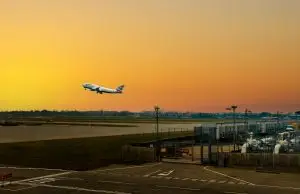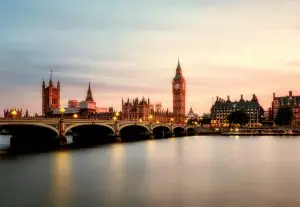The UK Government has officially granted development consent for the Lower Thames Crossing, a major infrastructure project aimed at enhancing connectivity between Kent, Thurrock, and Essex.[1] This decision marks a pivotal step in addressing longstanding transportation challenges in the southeast of England.
The Lower Thames Crossing is one of the most ambitious road projects undertaken in recent decades, designed to relieve congestion at the Dartford Crossing, which is currently the only road crossing of the River Thames east of London. With over 50 million crossings per year, Dartford is significantly over capacity, leading to frequent delays and economic disruption. The new crossing is expected to provide substantial relief and support economic growth by improving freight and commuter routes.[2]
What is the overview of the Lower Thames Crossing?
The Lower Thames Crossing is designed as a 14.5-mile (23 km) route that will connect the A2/M2 in Kent to the M25 in Essex. The central feature of the project is a twin-bore tunnel beneath the River Thames, which will become the UK’s longest road tunnel upon completion.[3]
National Highways, the body responsible for delivering the project, has emphasised the importance of this new infrastructure in reducing congestion and improving resilience in the transport network. The Lower Thames Crossing will include:
- Two 2.6-mile (4.3 km) tunnels, making it the longest road tunnel in the UK.
- New and upgraded roads connecting key economic hubs in Kent and Essex.
- Enhanced environmental mitigation measures, including green bridges and noise barriers.
- Cycling, walking, and horse-riding routes as part of the broader development.
The project is expected to improve journey reliability and create up to 22,000 jobs during its construction phase. Additionally, it is estimated to provide a boost of up to £8 billion to the UK economy.[4]
What was the approval process for the Lower Thames Crossing?
National Highways submitted the application for the Lower Thames Crossing to the Planning Inspectorate on 31 October 2022, with acceptance for examination on 28 November 2022. Following a comprehensive six-month examination period, during which the public and stakeholders provided input, the Examining Authority made its recommendations to the Secretary of State on 20 March 2024. The development consent was officially granted on 25 March 2025.[5]
The approval process faced scrutiny from environmental groups and local councils concerned about the potential impact on protected natural areas and increased carbon emissions. Despite this, the Department for Transport deemed the project essential for national infrastructure, leading to its eventual approval.[6]
What has the reaction from stakeholders been to the Lower Thames Crossing approval?
The approval has garnered strong reactions from various stakeholders, with many in the transport and business sectors welcoming the decision. This included:
The Road Haulage Association (RHA), who hailed the decision as a major victory for the road transport sector and for the wider economy.[7] The association has long argued that the Dartford Crossing is no longer fit for purpose and that alternative routes are essential to ensure smoother logistics and freight movement.
Locate in Kent, a business advocacy group that emphasised that the Lower Thames Crossing will ensure more efficient movement of goods and people, reinforcing Kent and Medway’s position as the UK’s gateway to Europe.[8]
Local councils and environmental groups offered some objections, in contrast to the many business groups who supported the project. Gravesham Borough Council and environmental organisations had raised concerns about air quality, noise pollution, and the impact on green spaces.[9] Additionally, groups such as the Campaign to Protect Rural England (CPRE) argue that alternative investments in public transport and rail freight should be prioritised instead of new road infrastructure.[10]
What are the economic and environmental considerations for the Lower Thames Crossing?
The project, estimated to cost £10 billion, is expected to provide significant economic benefits by improving connectivity and reducing delays caused by congestion. It is projected to create thousands of jobs and stimulate local economies in both Kent and Essex.[11]
However, the development has also raised environmental concerns. The tunnel and associated road network will pass through several areas of ecological importance, including the Thames Estuary and Marshes, which are designated as Sites of Special Scientific Interest (SSSI). To address these concerns, National Highways has committed to an extensive environmental mitigation strategy, including planting two million trees and creating new wildlife habitats to offset the impact of construction.[12]
Another key issue is the project’s impact on carbon emissions. Critics argue that while the new crossing may reduce congestion, it could also encourage more road travel, leading to higher emissions. In response, the Government has pledged to integrate the project with broader sustainability goals, including measures to promote electric vehicle adoption and greener construction methods.[13]
What are the next steps for the Lower Thames Crossing?
With development consent secured, the focus now shifts to the project’s implementation phase. National Highways plans to commence construction in 2026, aiming for the crossing to be operational by 2032.[14] The key milestones in the coming years include:
- Detailed Design and Procurement (2025-2026) – Finalising construction plans and awarding contracts to major infrastructure firms.
- Early Works and Site Preparation (2026-2027) – Initial groundwork, including site clearance and relocation of utilities.
- Major Construction Phase (2027-2032) – Drilling of tunnels, road construction, and installation of supporting infrastructure.
- Operational Readiness and Testing (2032) – Final safety checks and system testing before opening to traffic.
The project is anticipated to significantly enhance connectivity between southern England and the Midlands, improving travel times and reducing pressure on existing road infrastructure.[15]
The granting of development consent for the Lower Thames Crossing represents a significant milestone in the UK’s infrastructure development. By providing a new route beneath the River Thames, the project aims to alleviate congestion, enhance connectivity, and stimulate economic growth in the region. However, challenges remain, particularly regarding environmental concerns and project costs. As construction progresses, ongoing dialogue with local communities and stakeholders will be essential to ensure the project delivers on its promises while minimising its impact on the environment and surrounding communities.
BREVIA CONSULTING PROVIDES STRAIGHTFORWARD POLITICAL ADVICE AND SUPPORT TO BUSINESSES AND ORGANISATIONS
Discover how Brevia can help you and your organisation by contacting the Brevia Team on 020 7091 1650 or contact@brevia.co.uk
[1] Planning Inspectorate, Lower Thames Crossing development consent decision announced, 25 March 2025, Link
[2] Financial Times, Ministers give green light to £10bn Lower Thames Crossing, 25 March 2025, Link
[3] Planning Inspectorate, Lower Thames Crossing development consent decision announced, 25 March 2025, Link
[4] Financial Times, Ministers give green light to £10bn Lower Thames Crossing, 25 March 2025, Link
[5] Planning Inspectorate, Lower Thames Crossing development consent decision announced, 25 March 2025, Link
[6] Planning Inspectorate, Lower Thames Crossing development consent decision announced, 25 March 2025, Link
[7] Road Haulage Association, RHA welcomes Lower Thames Crossing development consent decision, 25 March 2025, Link
[8] Locate in Kent, Lower Thames Crossing development consent decision announced, 25 March 2025, Link
[9] Gravesham Borough Council, Council confirms opposition to Lower Thames Crossing, 21 June 2023, Link
[10] Campaign to Protect Rural England, Lower Thames Crossing approval shows an outdated approach to transport, 28 March 2025, Link
[11] Financial Times, Ministers give green light to £10bn Lower Thames Crossing, 25 March 2025, Link
[12] National Highways, Lower Thames Crossing Sustainability Report, 4 October 2024, Link
[13] Reuters, Britain gives go-ahead to new $13 billion Thames tunnel, 25 March 2025, Link
[14] Financial Times, Ministers give green light to £10bn Lower Thames Crossing, 25 March 2025, Link
[15] Financial Times, Ministers give green light to £10bn Lower Thames Crossing, 25 March 2025, Link




